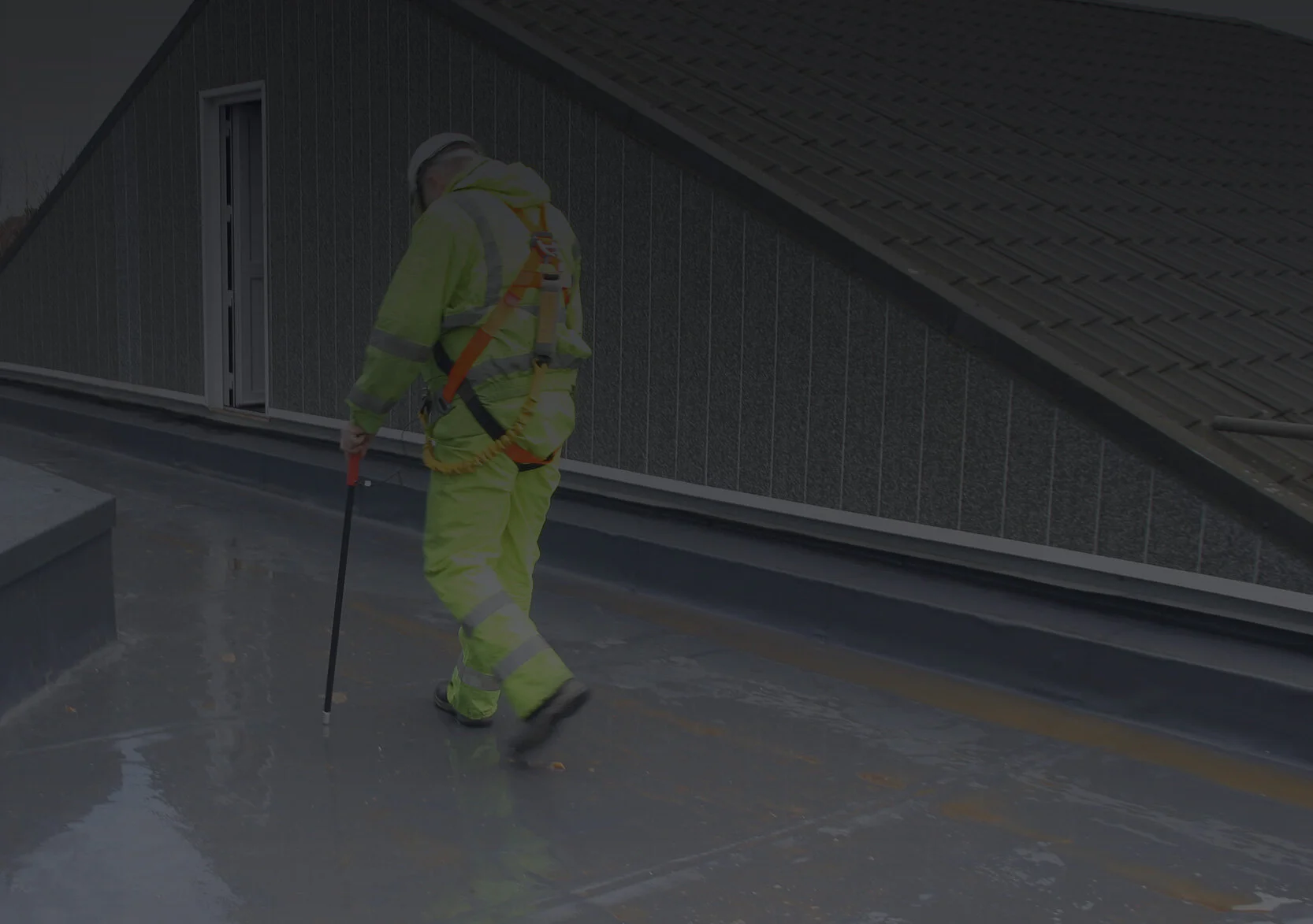
Electronic Field Vector Mapping
Electronic Field Vector Mapping, also called ‘wet test’; uses a ‘low-voltage’ test method to create an electric field across a wet surface of a waterproof membrane. A loop conductor is placed on the membrane to define the area to test, exclude irrelevant signals and detect any changes within the field that are caused by any electrical leakage to earth at points of potential water leakage.
All test methods will be complemented by thorough non-destructive visual inspection of all lap/seams especially upstand details and by the testing of all field area lap/seams using a seam probe.
Once the tests are completed, EuroLDS will advise on the next steps and, if necessary, help to fix any defects.
+ Applications
- Accurate detection of location points of electrical leakage to earth through the waterproofing membrane, which are sources of water ingress.
- Can be used on upstands close to the point of termination to the structure.
- Well suited to virtually all types of waterproofing membrane systems apart from EPDM.
+ Requirements
- The waterproofing membranes must be an electrical insulator.
- Continuous electrical earth must be present below the waterproof system. This may be an electrically conductive deck, foil-faced insulation, or a foil-faced vapour control layer.
- A newly installed waterproofing system must have been exposed to a period of rainfall or soaking before any test.
- The membrane surface must be thoroughly wet in the area that is under test and must remain saturated for the duration of the testing.
- Water supply to the test area is essential.
+ Limitations
- May not be fully effective on inverted, ballasted, paved or planted roofs, EPDM membranes, foil-faced bitumen membranes, aluminised painted surfaces, timber panel decks such as plywood and maybe ineffective on some insulated systems.
- It shall not be carried out on frosted or icy surfaces.
+ Health & Safety
Before commencement, EuroLDS will submit a RAMS (Risk Assessment and Method Statement) to the site management team for their review and approval. Health and safety procedures will be observed whilst working at heights. Furthermore, as most membranes can be slippery when wet or icy, testing may not be performed in frost, snow, heavy rain or high winds, unless deemed safe to do so by EuroLDS personnel.
Don’t let small leaks turn into big problems.


